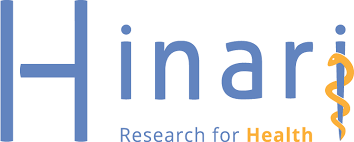ANALYSIS THE EFFECT OF SENSORY INTERVENTION ON PATIENT'S ANXIETY ACCORDING TO MAGNETIC RESONANCE IMAGING-ANXIETY QUESTIONNAIRE (MRI-AQ) AND HEART RATE IN MRI LUMBAL EXAMINATION

Downloads
Background: The use of MRI as a non-invasive diagnostic radiological examination modality is painless. However, patients may experience claustrophobia and anxiety. Sensory intervention is a method of providing sensory stimulation to an individual, which is expected to reduce the anxiety. Purpose: To determine the effect of the sensory intervention on the anxiety level of patients using an intervention scent by inhalation and intervention sound based on heart rate and MRI-AQ in patients with MRI lumbal examination. Method: 24 samples were divided into three groups: intervention scent, combination intervention scent-sound, and control, with eight samples each. Intervention scent is given using lavender essential oil as aromatherapy, drop three drops on the mask, then put the mask on for 5 minutes before the examination until the examination is completed. Intervention sound is given by playing music (nature-sound) during the examination. Result: Sensory intervention, specifically the use of combination intervention scent-sound, significantly reduces anxiety in patients during MRI lumbal examination significantly p = 0.004 (p<0.05). Conclusion: The use of a combination between lavender and nature-sound as media for sensory intervention has a positive effect on reducing anxiety during MRI lumbal examination based on heart rate. Due to the easy administration of this aromatherapy and the minimal risk for this treatment, it is recommended that it is applied to reduce anxiety during MRI.
Ahani, N., Salehi, K., Seidi, J., Salehi, B., Nouri, B., 2019. The Effect of Aromatherapy with Citrus Aurantium on Anxiety during MRI Imaging in Patients with Spinal Disorders: A Randomized Clinical Trial. J. Pharm. Res. Int. Vol.26(2), Pp. 1-8.
Ahlander, B.-M., í…restedt, K., Engvall, J., Maret, E., Ericsson, E., 2016. Development and Validation of A Questionnaire Evaluating Patient Anxiety during Magnetic Resonance Imaging: The Magnetic Resonance Imaging- Anxiety Questionnaire (MRI-AQ). J. Adv. Nurs. Vol.72(6), Pp. 1368-1380.
Amaliya, M.I., Setiawati, R., Sari, A.K., Muqmiroh, L., Muhaimin, M., 2019. Scoring Analysis of The Relationship Between Magnetic Resonance Imaging - Anxiety Questionnaire (MRI-AQ) with Heart Rate to Patients Anxiety Level at Lumbosacral MRI Examinition. J. Vocat. Heal. Stud. Vol.2(3), Pp. 112–117.
Arwani, A., Sriningsih, I., Hartono, R., 2013. Pengaruh Pemberian Aromaterapi terhadap Tingkat Kecemasan Pasien sebelum Operasi dengan Anestesi Spinal di RS Tugu Semarang. J. Keperawatan Jiwa Vol.1(2), Pp. 129-134.
Bolejko, A., Hagell, P., 2021. Effects of An Information Booklet on Patient Anxiety and Satisfaction with Information in Magnetic Resonance Imaging: A Randomized, Single-Blind, Placebo-Controlled Trial. Radiography Vol.27(1), Pp. 162-167.
Bradt, J., Dileo, C., Potvin, N., 2013. Music for Stress and Anxiety Reduction in Coronary Heart Disease Patients. Cochrane Database Syst. Rev. Vol.2013(12).
Carlsson, S., Carlsson, E., 2013. The Situation and The Uncertainty About the Coming Result Scared Me but Interaction with The Radiographers Helped Me Through: A Qualitative Study on Patients Experiences of Magnetic resonance imaging examinations. J. Clin. Nurs. Vol.22(21-22), Pp. 3225-3234.
Chapman, H.A., Bernier, D., Rusak, B., 2010. MRI-Related Anxiety Levels Change within and Between Repeated Scanning Sessions. Psychiatry Res. Vol.182(2), Pp.160-164.
Claresta, L.J., Purwoko, Y., 2017. Pengaruh Konsumsi Cokelat Terhadap Tingkat Kecemasan Mahasiswa Fakultas Kedokteran Praujian. J. Kedokt. Diponegoro Vol.6(2), Pp. 734-747.
Hati, S.W., Wahyuni, W., 2016. The Effect of The Application of Work Safety and Health to Awareness of SOP (Standard Operating Procedure) on Employee Bulk (Subcaintractor) Contruction in The Company XYZ Batam. In: Proceedings International Conference on Accounting, Management Economics and Social Sciences (ICAMESS) April 30. Jakarta, p. Pp. 516-530.
Heismann, B., Ott, M., Grodzki, D., 2015. Sequence-Based Acoustic Noise Reduction of Clinical MRI Scans. Magn. Reson. Med. Vol.73(3), Pp. 1104-1109.
Homyra, T., Elie, A., Mandana, Z., Hadi, D., 2013. The Impact of Aromatherapy on Hemodynamic Condition of Patients Experiencing Coronary Angiography. Med. - Surg. Nurs. J. Vol.2(1-2), Pp. 26-32.
Minde, D. van, Klaming, L., Weda, H., 2014. Pinpointing Moments of High Anxiety during An MRI Examination. Int. J. Behav. Med. Vol.33(1), Pp.180-183.
Mohammed, E.K., Atef, J., Ellife, H.A., 2013. Effectiveness of Health Instructions on Reducing Anxiety Levels and Claustrophobia among Female Adolescents Undergoing Magnetic Resonance Imaging. Am. J. Res. Commun. Vol.1(5), Pp. 43-64.
Mostafa, M., 2014. Architecture for Autism: Autism AspectssTM in School Design. Int. J. Archit. Res. Vol.8(1), Pp. 143-158.
Mubarak, F., Baig, K.B.M., Anwar, S.S.M., 2015. Claustrophobia during Magnetic Resonance Imaging (MRI): Cohort of 8 Years. Int. Neuropsychiatr. Dis. J. Vol.3(4), Pp. 106-111.
Munn, Z., Jordan, Z., 2011. Radiography The Patient Experience of High Technology Medical Imaging : A Systematic Review of The Qualitative Evidence. Radiography Vol.17(4), Pp. 323-331.
Munn, Z., Moola, S., Lisy, K., Riitano, D., Murphy, F., 2015. Claustrophobia in Magnetic Resonance Imaging: A Systematic Review and Meta-Analysis. Radiography Vol.21(2), Pp. e59-e63.
Nikolin, S., Boonstra, T.W., Loo, C.K., Martin, D., 2017. Combined Effect of Prefrontal Transcranial Direct Current Stimulation and Working Memory Task on Heart Rate Variability. PLoS One Vol.12(8), Pp. e0181833.
Primadiati, R., 2002. Aromaterapi: Perawatan Alami Untuk Sehat dan Cantik. Gramedia Pustaka Utama, Indonesia.
Rochman, K.L., 2010. Kesehatan Mental. STAIN Press, Purwokerto.
Safaria, T., Saputra, N.E., 2012. Manajemen Emosi: Sebuah Panduan Cerdas Bagaimana Mengelola Emosi Positif dalam Hidup Anda. Bumi Aksara, Jakarta.
Sayorwan, W., Siripornpanich, V., Piriyapunyaporn, T., Hongratanaworakit, T., Kotchabhakdi, N., Ruangrungsi, N., 2012. The Effects of Lavender Oil Inhalation on Emotional States, Autonomic Nervous System, and Brain Electrical Activity. J. Med. Assoc. Thail. Vol.95(4), Pp. 598-606.
Stanley, E., Cradock, A., Bisset, J., McEntee, C., O'Connell, M.J., 2016. Impact of Sensory Design Interventions on Image Quality, Patient Anxiety and Overall Patient Experience at MRI. Br. J. Radiol. Vol.89(1067), Pp. 1-6.
Sundari, S., 2004. Kearah Memahami Kesehatan Mental. FIP UNY, Yogyakarta.
Tazegul, G., Etcioglu, E., Yildiz, F., Yildiz, R., Tuney, D., 2015. Can MRI Related Patient Anxiety be Prevented? Magnetic Resonance Imaging. Magn. Reson. Imaging Vol.33(1), Pp.180-183.
Watt, L., 2014. Evaluating Patient experience in Magnetic Resonance Imaging (MRI). Eval. Patient Exp. Magn. Reson. Imaging.
Woelk, H., Schlafke, S., 2010. A Multi-Center , Double-Blind , Randomised Study of The Lavender Oil Preparation Silexan in Comparison to Lorazepam for Generalized Anxiety Disorder. Phytomedicine Vol.17(2), Pp. 94-99.
Copyright (c) 2022 Journal of Vocational Health Studies

This work is licensed under a Creative Commons Attribution-NonCommercial-ShareAlike 4.0 International License.
- The authors agree to transfer the transfer copyright of the article to the Journal of Vocational Health Studies (JVHS) effective if and when the paper is accepted for publication.
- Legal formal aspect of journal publication accessibility refers to Creative Commons Attribution-NonCommercial-ShareAlike (CC BY-NC-SA), implies that publication can be used for non-commercial purposes in its original form.
- Every publications (printed/electronic) are open access for educational purposes, research, and library. Other that the aims mentioned above, editorial board is not responsible for copyright violation.
Journal of Vocational Health Studies is licensed under a Creative Commons Attribution-NonCommercial-ShareAlike 4.0 International License














































